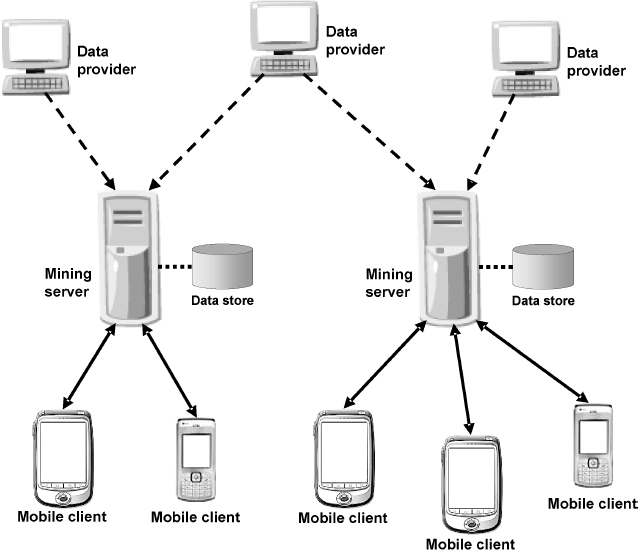12.4 SYSTEM DESIGN AND IMPLEMENTATION
In this section, we describe the design and implementation of the system. As mentioned before, the goal of the system is to support mobile data mining on small devices, such as cellular phones or PDAs, through the use of Web services. First, we introduce the system architecture and describe the design of system components. Then, we present the functionality of the system and its implementation.
12.4.1 General Architecture
The system is based on the client–server architecture shown in Figure 12.1.

Figure 12.1 General architecture of the system.
The architecture includes three types of components:
- Data providers: the applications that generate the data to be mined.
- Mobile clients: the applications that require the execution of data mining computations on remote data.
- Mining servers: server nodes used for storing the data generated by data providers and for executing the data mining tasks submitted by mobile clients.
As shown in Figure 12.1, data generated by data providers is collected by a set of mining servers that store it in a local data store. Depending on the application requirements, data coming from a given provider could be stored in more than one mining server.
The main role of mining servers is to allow mobile clients to perform the analysis of remote data by using a set of data mining algorithms. Once connected to a given server, ...
Get Mobile Intelligence now with the O’Reilly learning platform.
O’Reilly members experience books, live events, courses curated by job role, and more from O’Reilly and nearly 200 top publishers.

